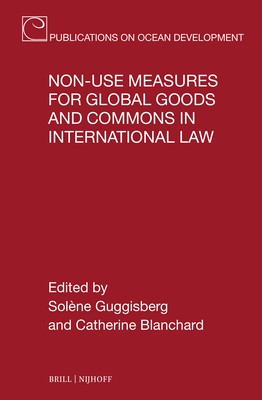
- We will send in 10–14 business days.
- Publisher: BRILL NIJHOFF
- ISBN-10: 9004730567
- ISBN-13: 9789004730564
- Format: 15.2 x 22.1 x 3.8 cm, kieti viršeliai
- Language: English
- SAVE -10% with code: EXTRA
Non-Use Measures for Global Goods and Commons in International Law (e-book) (used book) | bookbook.eu
Reviews
Description
In a world facing major environmental crises, radical measures are increasingly called for. As a change in paradigm from our anthropocentric approach to the environment and its resources remains mostly aspirational, non-use measures present themselves as practical regulatory tools to respond to environmental degradation.
This edited volume examines moratoria, bans, no-take or entry zones across regimes regulating global goods and commons. It analyses factors that have contributed to the successful adoption and implementation of non-use measures for resources in the high seas, deep seabed, atmosphere, and Antarctica. It then presents pathways for the development and adoption of further non-use measures in these areas and in outer space, before reflecting on such measures' limitations and potential.
EXTRA 10 % discount with code: EXTRA
The promotion ends in 21d.18:50:27
The discount code is valid when purchasing from 10 €. Discounts do not stack.
- Publisher: BRILL NIJHOFF
- ISBN-10: 9004730567
- ISBN-13: 9789004730564
- Format: 15.2 x 22.1 x 3.8 cm, kieti viršeliai
- Language: English English
In a world facing major environmental crises, radical measures are increasingly called for. As a change in paradigm from our anthropocentric approach to the environment and its resources remains mostly aspirational, non-use measures present themselves as practical regulatory tools to respond to environmental degradation.
This edited volume examines moratoria, bans, no-take or entry zones across regimes regulating global goods and commons. It analyses factors that have contributed to the successful adoption and implementation of non-use measures for resources in the high seas, deep seabed, atmosphere, and Antarctica. It then presents pathways for the development and adoption of further non-use measures in these areas and in outer space, before reflecting on such measures' limitations and potential.


Reviews